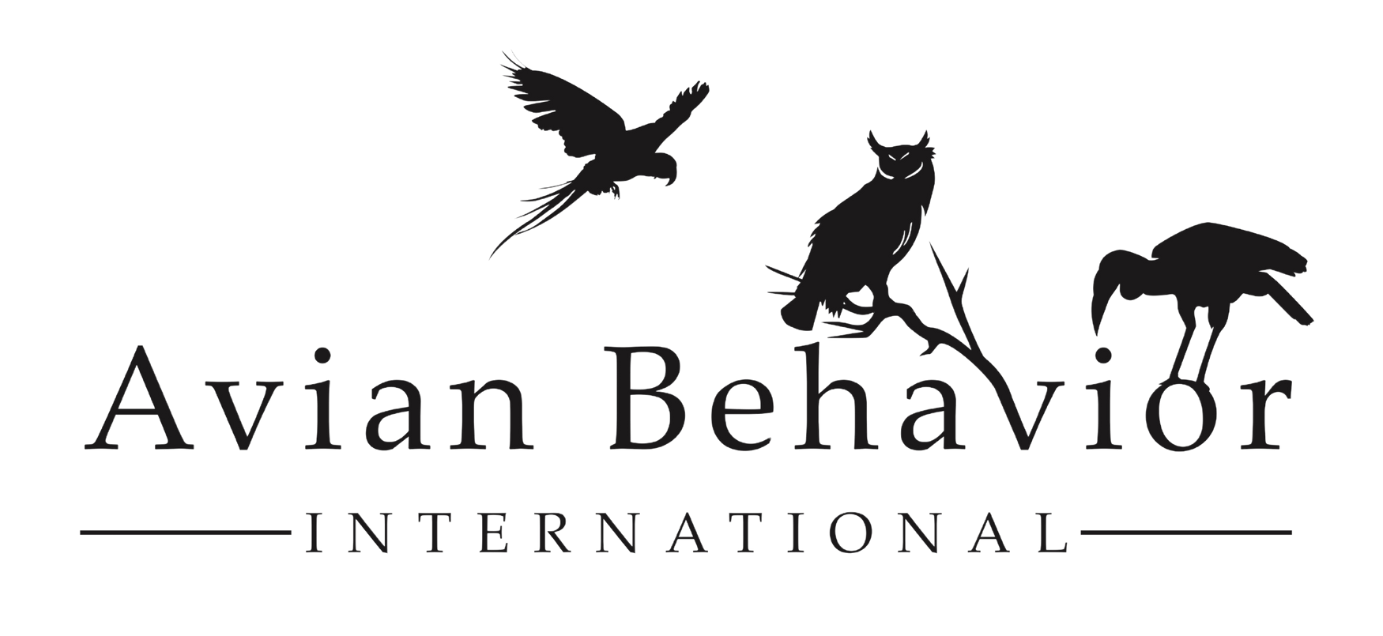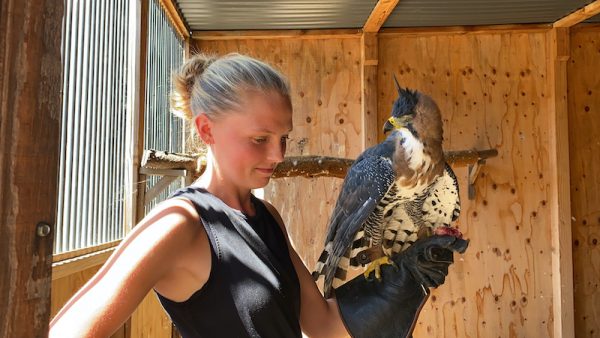
28 Jul What is a Hanging Bate and Why Do We Want to Avoid Them at All Costs?
If you have ever handled a trained bird of prey, you might have had to deal with a bate. A bate is when you have the bird on your glove, you have the jesses tucked in, and the bird decides it wants to go somewhere else and flaps off the glove. If the raptor is small, like a kestrel or barn owl, maybe a few flaps and flutters, and that’s the end of it. If you have ever had a golden eagle on the glove, it could feel like the bird is going to take you with them and you are doing everything you can to keep your glove up until the bird rights itself and regains composure, talons firmly back on the correct side of your glove.
Bates can happen, even when we use positive reinforcement to teach our raptor that sitting on the glove is the bee’s knees. That’s the approach we take here at Avian Behavior International. Through tidbitting meat scraps and gradually longer intervals leading to the next reinforcing opportunity, our raptors learn that the glove is a valuable place to sit.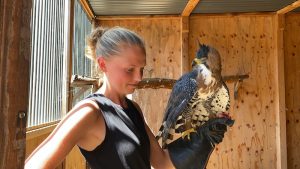
So what then, is a hanging bate? A hanging bate is when a bird bates and doesn’t attempt to recover and regain its composure back on the glove. So what does it look like when a bird doesn’t recover? The bird may be actively flapping away from the glove and trying to escape, it may be just hanging from the glove and chittering, the bird might not try to stand or grasp with its feet at all, or the bird may twist around or spin, which can happen with birds who only have one good wing. A hanging bate is typically viewed as an extreme expression of an undesirable response.
It is stressful, because what any bate means, but especially a hanging bate, is that the bird has been pushed over its threshold. A hanging bate means that for whatever reason, the bird does not have the motivation – or in some cases, the ability – to return to the glove.
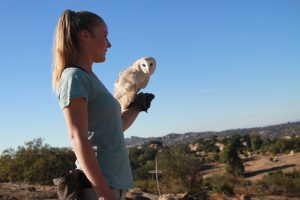 Either way, the impact on the trainer-animal relationship is generally the same, and damage control needs to be assessed for future training sessions. Like any extreme expression of a stress response, we want to prevent and avoid these types of interactions to enhance our communication and real estate value.
Either way, the impact on the trainer-animal relationship is generally the same, and damage control needs to be assessed for future training sessions. Like any extreme expression of a stress response, we want to prevent and avoid these types of interactions to enhance our communication and real estate value.
When we have a bird of prey that we have experienced a hanging bate with, we want to ask ourselves why it happened. Was the step we asked for too big? Was the bird not motivated for what we were asking of it? Was there something in the environment that the bird was unprepared in its training for?
Usually, our answer lies in one of these categories. This doesn’t always mean that the bird needs to have more motivation through weight management, per se. For instance, in one clip we showed in our Training Tidbit on hanging bates in our membership, we showed how a new trainer was taking a very young Guinness the Eurasian Eagle on an early walk under supervision. It became clear very suddenly that Guinness, as young owls do, went from interested in food to not interested at all. Because he was still new to walking around and taking in the sights, everything had the potential to put him in to Bate Mode. At this stage, as a supervisor, I couldn’t get information to the new trainer fast enough how to keep him engaged with his handler: it was all happening too fast and not fast enough. Young Guinness bated and had a hard time recovering, and the trainer wasn’t sure how to recover him.
Fortunately, with me right there, we got him back on the glove and returned him smoothly home without incident. And he never had another incident like that! Understanding why that happened was incredibly useful – a bird that went from 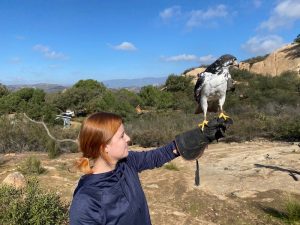 interested in food to not taking any food is one that we can build from. Building his skills actually helps build his motivation level without having to drop the number on the scale. He was simply out for too long of a walk for what he and his trainer had the skills for at that point in time.
interested in food to not taking any food is one that we can build from. Building his skills actually helps build his motivation level without having to drop the number on the scale. He was simply out for too long of a walk for what he and his trainer had the skills for at that point in time.
Hanging bates are as individual as the training teams that experience them, but we do our best to avoid them at all costs and deconstruct them when they do happen. As you might have learned from our blog, our podcasts, and our Membership Lab, we don’t personally find value in manning birds of prey for hours as a relationship building practice. We use our time with raptors carefully to create value-added interactions, which in some cases in the early days, can just be a few minutes. We have pushed forward the idea that even negative reinforcement can be used in a choice-based paradigm for incredibly powerful results.
We have even more about hanging bates in our course about them, as well as how to prevent bates, and increasing motivation through a variety of means.
You can check out exactly what we are talking about by getting inside the Avian Behavior Lab and seeing the loads of incredible content, from courses to classes and our white hot community forum. Not sure you have the time? Check out a premium membership for just $3 for ten days with the coupon code TEN.
Our Advanced Animal Training Workshop 2021 is selling out fast, and there are just a few spots left! Check out what we have going on coming up November 3 – 6 2021!

